Robert Parker on the Past, Present and Future of Wine
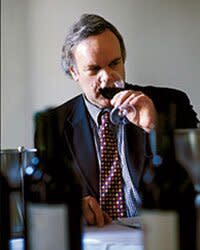
In this Article
1987: Wines with Character
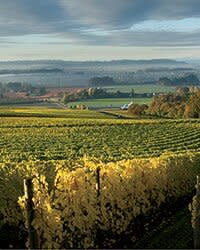
Photo © Mike Haverkate
Ray Isle In 1987, you worried that "the continuing obsession with technically perfect wines is stripping wines of their identifiable and distinctive character. It seems to be the tragedy of modern winemaking that it is increasingly difficult to tell an Italian Chardonnay from one made in France or California or Australia." You added, "Winemakers and the owners of wineries, particularly in America, must learn to take more risks and to preserve the individual character of their wines, even at the risk that some consumers may find them bizarre or unusual." Looking at things now, did winemaking move away from that trend toward anonymity, or did it continue?
Robert Parker There has been an extraordinary proliferation of wines that did not exist (or their viticultural regions were completely under the radar) in 1987. The diversity of wines today is at least ten- to twenty-fold greater than it was then. Of course, diversity has not only occurred in France's most famous wine regions, such as Burgundy, Bordeaux and Champagne, but also in less prestigious appellations, particularly in the Rhône Valley corridor, and through the Languedoc-Roussillon corridor to the Spanish border. Add the extraordinary number of different styles of wine emerging from Spain, Southern Italy, Australia, New Zealand, South America and South Africa, and you see it's a buyer's paradise. The younger generation of winemakers have returned to their vineyards and terroirs, and are doing a better job of producing more natural, distinctive and singular wines. Keep in mind that in 1987, no one was talking about wines made from either organic or biodynamically farmed vineyards, much less natural wines or unfined and unfiltered wines, or wines that represented the natural essence of their vineyards. This is one of the great breakthroughs that has occurred largely from 1990 onward.
Ray Isle Also in 1987, you wrote, "Western Oregon may well have the finest potential of any viticultural region in the world, outside of Burgundy, to produce great wine from the fickle and temperamental Pinot Noir grape." Did western Oregon's wineries fulfill that potential?
Robert Parker Oregon is finally fulfilling its vast potential. Perhaps the catalyst was the arrival of a dramatic number of outsiders, not only from France, but from California and elsewhere, who purchased land and planted Pinot Noir, Pinot Gris and other varietals. Oregon does suffer from the same problem that many marginal climates do: a challenging fall growing season, often plagued by descending low-pressure rain systems from Alaska and Canada. However, as I write this article, 2012 promises to be one of the state's all-time-great vintages, making up for a bizarre and so-so year in 2011. Oregon has come of age, something that is also reflected in the numerous articles about this idyllic region, which has not yet been spoiled by tourism, high-rise hotels, casinos, art galleries or modern, garish wineries.
1987 Prediction
Parker worried that an obsession with technical perfection was stripping wines of their distinctive characters. Winemakers, he said, needed to learn to take more risks—even if consumers found the results bizarre.
1987 Reality
Today, there is remarkable diversity in wine style, not only in places like France but also in Spain, southern Italy and beyond. The advent of natural wines was also an enormous breakthrough.
1990: Best New Wineries
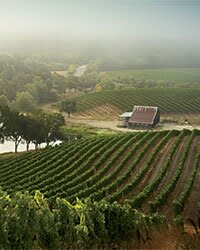
Photo courtesy of Kistler Vineyards
Ray Isle In 1990, you chose a number of wineries as California's rising stars. What are your picks for that honor today?
Robert Parker Of the rising stars I selected in 1990, only Kistler, which continues to be one of the benchmarks for high-quality Chardonnay and Pinot Noir from anywhere in the world, would make the list today. But I'm thrilled by the number of California wineries that have emerged over the last 20 years, fulfilling my expectations that California could produce many world-class wines.
The Prediction
In 1990 Parker named six wineries from around the state of California as rising stars.
The Reality
Of his original picks, Kistler alone still makes the cut. Parker's new California additions include DuMOL, Hartford Court, Radio-Coteau, Cliff Lede, Hundred Acre, Verité and Vineyard 29.
World-Class California Wineries
The following California wineries could be called up-and-coming, although some of them have already attained stardom. There are others I could include, but the most interesting characteristic of these producers is that, with several exceptions, none were making wine in 1990! —RP
Central Coast
Alban Vineyards
Brewer-Clifton
Sine Qua Non
North Coast, for Pinot Noir & Chardonnay
Aubert
DuMOL
Hartford Court
Marcassin
Martinelli
Morlet Family Vineyards
Paul Hobbs
Peter Michael
Radio-Coteau
Rochioli
For Cabernet Sauvignon
Abreu
Araujo
Blankiet
Bond
Bryant Family
Cliff Lede
Colgin
Dalla Valle
Dana Estates
Dominus
Futo
Harlan Estate
Hundred Acre
Kapcsandy
Larkmead
Paul Hobbs
Peter Michael
Philip Togni
Pride Mountain
Rudd Estate
Schrader
Screaming Eagle
Shafer
Vérité
Vineyard 29
1998: Bordeaux
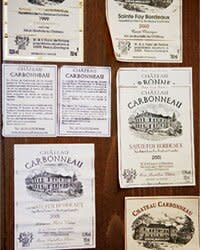
Photo © Martin Morrell
Ray Isle In 1998 you wondered, "Just how high could prices soar for [top Bordeaux châteaus'] newest vintages in 2010 or 2020? In 1983, I paid $110 for a case of the extraordinary 1982 Pichon Lalande and $550 for the 1982 Mouton. Those wines begin at $2,500 and $7,000 a case today. It's not hard to envision the 2009 vintage of Latour being offered as a wine future in 2010 at $10,000 or even $15,000 a case!" Recently, cases of 2009 Latour have been selling for $28,000, a mind-boggling amount to say the least. Can prices go any higher?
Robert Parker Here's a prediction that looked extreme in 1998, but has proven to be far too conservative. Today, in a great vintage (such as 2009), first-growth Bordeaux sells from between $15,000 and $30,000 a case. My prediction of top Bordeaux being offered as futures for $10,000 to $15,000 a case by 2010 is accurate, but on the low side. We are now in a buyer's rather than a seller's market. With a world economy in the doldrums, though, it is possible we could see a major correction in pricing for high-end luxury wines over the near-term. But for now, limited-production wines such as top Bordeaux, Burgundy and boutique California Cabernet Sauvignon sell at remarkably high prices.
1998 Prediction
Just how high could Bordeaux prices possibly go? Parker wondered in 1998. Could they reach $10,000 a case for first-growth châteaus? Or even $15,000? "It's not hard to envision," he wrote.
1998 Reality
This prediction—which looked extreme in 1998—turned out to be conservative. Cases of first-growth Bordeaux now sell for as much as $30,000 in a great vintage.
2003: Burgundy
Ray Isle In 2003 you wrote, "Burgundy is, well, Burgundy. A minefield of potential disappointments beloved by elitists and pseudo-intellectuals who like to discuss ad nauseam growers and terroirs—not quality." Do you feel this is still the case?
Robert Parker In 2003, the rampant premature oxidation of the great majority of white Burgundies was not understood, and consumers had not yet been victimized by this problem. In 2012, the Burgundians have still not addressed this issue. Even worse, they have not determined why their grand cru white wines from hallowed sites are completely falling apart after five to six years of bottle age, when in the past, many of these white wines could evolve and improve for 25- to 30-plus years. Thanks to a more meticulous younger generation, red Burgundies have made improvements, but they, too, are still a minefield, and top vineyard sites are still significantly overpriced. Thankfully, lovers of Burgundian-style Chardonnays have the Mâconnais region, where prices are reasonable and problems of premature oxidation have not surfaced. The less expensive reds from the Côte de Beaune also remain reasonably good values. The future still looks mixed, but I am optimistic that the younger generation of vignerons, who understand the competition that now exists, signifies that an era of preserving the status quo and careless farming and winemaking can no longer continue.
2003 Prediction
The future of Burgundy looked bleak to Parker in 2003. "Burgundy is a minefield of potential disappointments beloved by elitists and pseudo-intellectuals," he wrote.
2003 Reality
There are still plenty of problems with Burgundy, Parker says. But he's now feeling guardedly optimistic, largely thanks to the rise of a "younger generation of vignerons" who are determined to upend the status quo.
2004: Buying Wine
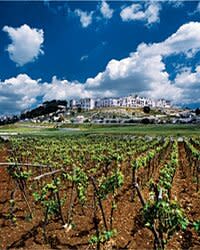
Photo © Mick Rock
Ray Isle In 2004, you predicted the total collapse of the three-tiered system of wine distribution in the United States, which makes it difficult for wineries to sell directly to consumers in many states, requiring them instead to sell to a wholesale middleman. You said, "I believe [that collapse] will be possible by 2015." Do you still think the three-tier system will disappear?
Robert Parker Probably the most distressing prediction I made in 2004 was that one, because it is apparent that this system will be around in some form or another for as long as most of us are likely to live. The people behind the system, the beer-and-liquor wholesalers, simply have too much political power with local legislators, and can marshal enormous financial support to lobby for their interests. The system continues to be inefficient and anti-consumer, and it needs to be modified. However, some states have loosened their grip on this antiquated, medieval system of distribution, which has never served the interests of the wine consumer.
Ray Isle In 2004 you also predicted that screw caps would be standard for the world's wines by 2015. What are your thoughts now?
Robert Parker One significant change I thought might occur was that cork-finished wines would be a minority by 2015. Statistically, this may be the case with some wines from Australia and many from New Zealand, but screw caps have made few inroads in Western Europe or the US. And to the credit of the cork industry, the plague of moldy, contaminated and badly finished corks that reached its zenith in the mid-1990s has been reversed. The cork industry seems to have realized that it must improve quality control or face extinction. In the mid-1990s, the percentage of corked bottles I would taste ran between 7 and 10 percent. Today it is under 2 percent, a major improvement.
2004 Prediction
Parker envisioned wine on the web going mainstream in the US; the rise of southern Italy and Argentina; and a growing consumer appreciation for unoaked white and red wines, among other predictions.
2004 Reality
The Internet has become a powerful force in wine—for good and bad, Parker writes. Southern Italy and Argentina, as he predicted, have had huge success, and unoaked wines are more diverse than ever.
2008: Grape Gurus & Regions to Watch
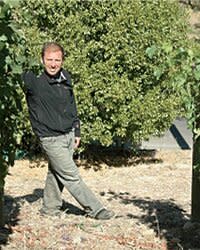
Photo © Marvin Collins
Grape Gurus
Ray Isle In 2008, you called out these winemakers as the world's most influential wine consultants—who would be on the roster be today?
Andy Smith
Denis Dubourdieu
Helen Turley
Mark Aubert
Michel Rolland
Paul Hobbs
Philippe Melka
Stéphane Derenoncourt
Robert Parker It's interesting that all the people I listed as the most influential wine consultants in 2008 have actually increased their influence—except for Helen Turley and Mark Aubert, who have both stopped consulting to focus on their own estate wines. Andy Smith, Denis Dubourdieu (the famous professor from Bordeaux), Michel Rolland, Paul Hobbs, Philippe Melka and Stéphane Derenoncourt continue to expand their influence as well as the number of their clients, and that's good news for the wine consumer. Anything associated with their names is of undeniably high, high quality. The only name I would add is Philippe Cambie, whose consulting work in southern France, Spain and Macedonia has left a brilliant legacy of superb wines.
2008 Prediction
In 2008, Parker called out eight consultants as being the world's most influential—including Philippe Melka, Denis Dubourdieu and Helen Turley—and predicted that their power would only continue to grow.
2008 Reality
All of Parker's picks continue to extend their influence, with the exceptions of Helen Turley and Mark Aubert, who are both concentrating on their own wines. The new addition to the roster: the Rhône Valley's Philippe Cambie.
Regions to Watch
Ray Isle In 2008, you described Argentina, California's Central and Sonoma Coasts, southern France, Spain and Washington state as the exciting new wine regions. Have they fulfilled their promise?
Robert Parker No one can disagree that all of these regions continue to reach their full potential, offering consumers impressive wines in many different styles, as well as diverse aromas and flavors. All of them remain front and center among the most exciting wines being made in the world today.
